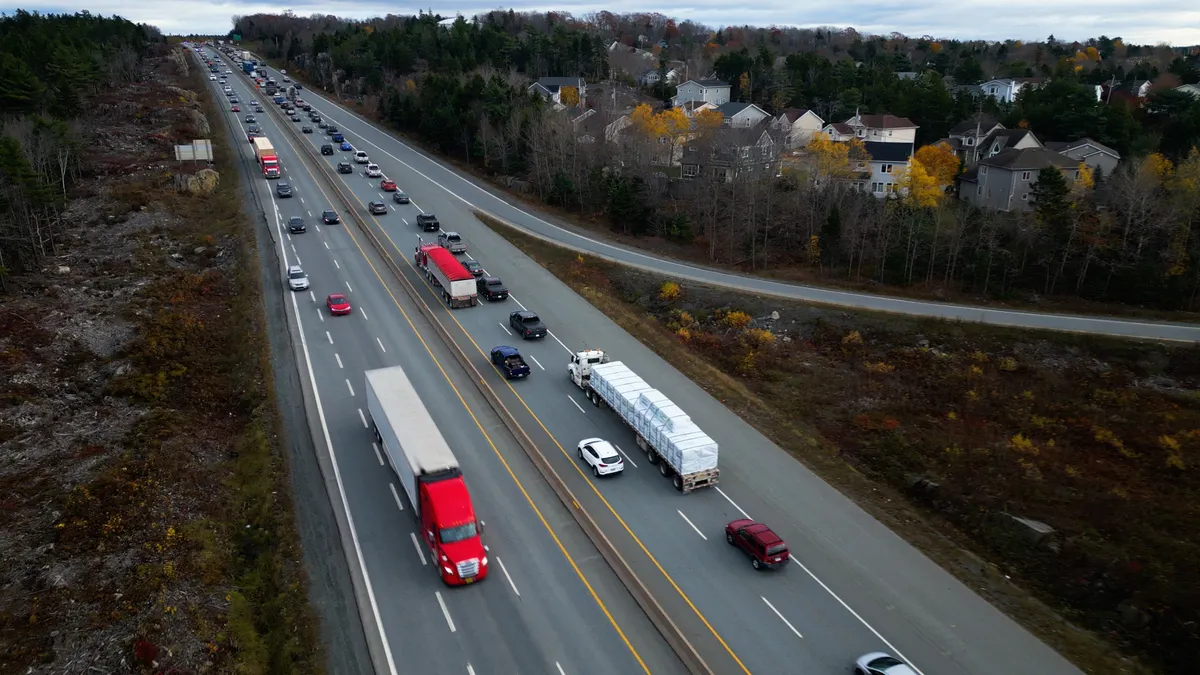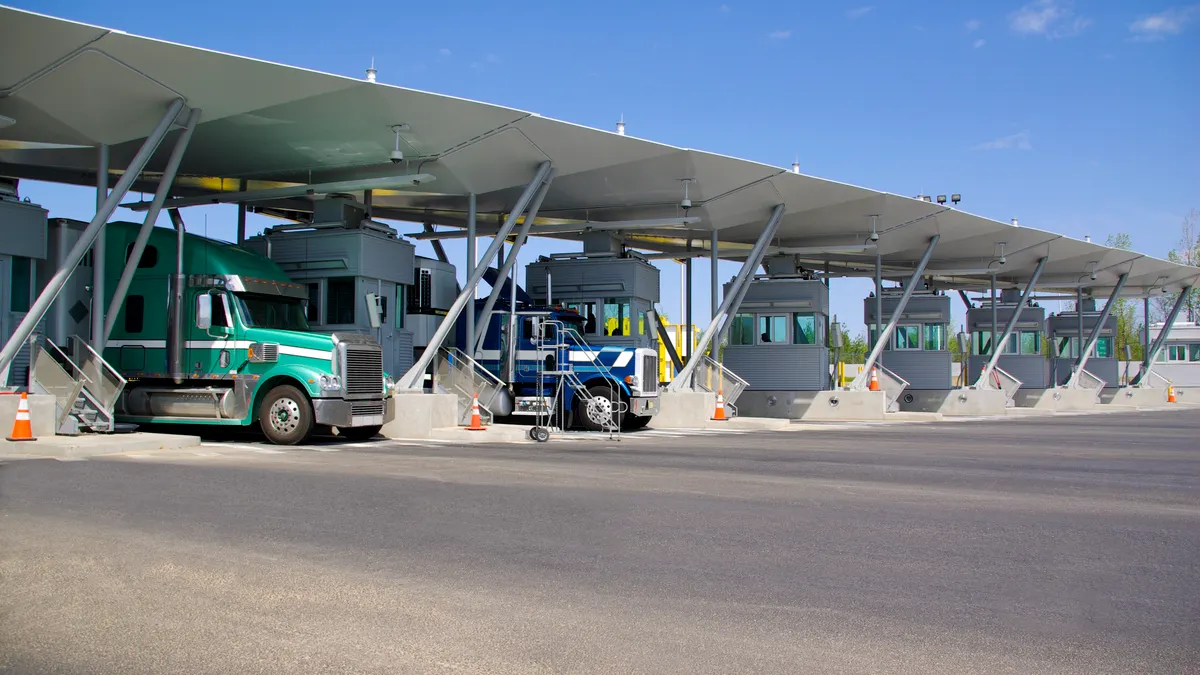Dive Brief:
- Imports to U.S. container ports hit a five-year low and will "remain significantly below normal levels through early summer," the National Retail Federation (NRF) and Hackett Associates said Tuesday, attributing the declines to shrinking consumer demand in the COVID-19 pandemic.
- "Cargo may sit longer than usual," NRF Vice President for Supply Chain and Customs Policy Jonathan Gold said in a statement. That would reduce the demand for trucking capacity from ports to inland U.S. locations.
- Import volume dropped 5% year-over-year in March at the Port of Long Beach, and 26% YoY at the Port of Los Angeles, the latter saying it was the "lowest amount of monthly cargo moving through the Port since February 2009."
Dive Insight:
Trucking analysts have warned the panic-buying-induced spike in transport demand and rates would be short lived, and an economic downturn was on the horizon. The numbers are beginning to show that reality, as import volumes shrink at the Southern California ports and the NRF projects lower than usual volumes through early summer.
In March, DAT Senior Analyst Peggy Dorf noted inbound container freight traffic was a key metric for transport executives to monitor as the coronavirus outbreak spread in the U.S., as spikes or dips would directly correlate to trucking demand. Imports have dipped significantly at the country's largest seaport, resulting in fewer cargo loads at the port for trucks to haul.
Now demand and rates for dry van are sliding, according to DAT. Demand is still high for essential goods transport, "but it is offset by widespread closures of manufacturing and distribution operations for goods that are deemed non-essential," Dorf wrote Tuesday.
FTR also reported higher truck availability and a volume collapse across dry van, reefer and flatbed. "We knew the day was going to come where the effects of the outbreak would impact loads and rates," FTR wrote.
Many retailers have reduced or canceled incoming inventory purchases, which contributes to lower volumes coming into the ports even as China manufacturing ramps back up.
And some warehouse operators, such as Amazon, are prioritizing fulfillment and distribution of essential supplies during the coronavirus pandemic. As a result, non-essential goods may sit at port terminals, Kyle Lintner, managing director of freight intelligence firm K-Ratio, told Transport Dive in March, until warehouses are able to accommodate all types of shipments again. The cargo stalled at ports further reduces the immediate need for trucks to haul particular loads to distribution centers.









